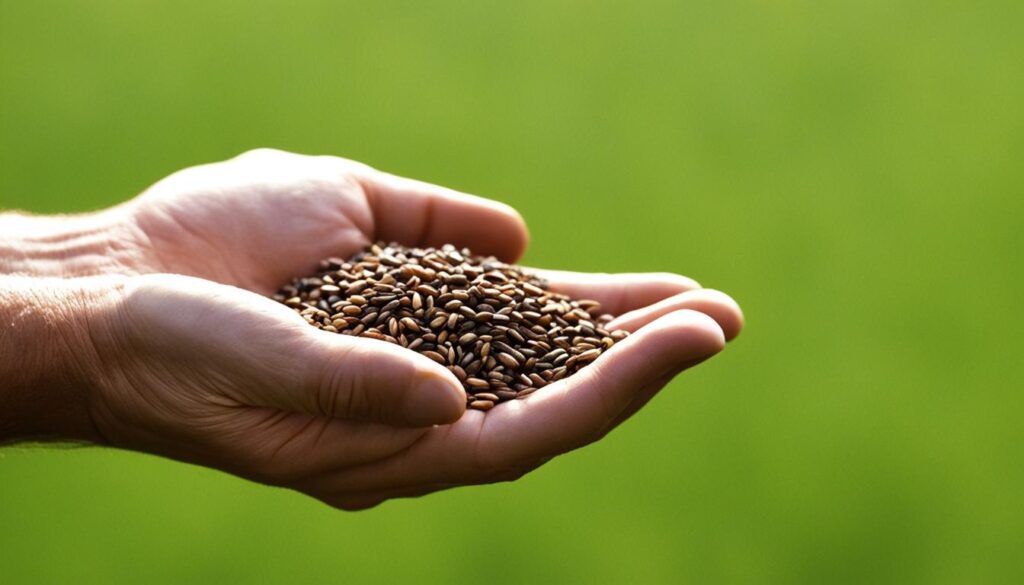If you’re a proud homeowner in Texas, creating a lush and vibrant lawn is likely high on your priority list. Planting grass seed at the optimal time is crucial for successful growth and a beautiful lawn that you can enjoy year-round.
When it comes to planting grass seed in Texas, timing is key. The best seasons for planting grass seed in Texas are winter and fall, when the grass is going into dormancy to prepare for the cold winter ahead. By planting during these seasons, you give the grass a head-start in its development process, ensuring it’s ready to flourish come spring and summer.
Planting grass seed in the spring may result in a longer germination cycle that stretches into the summer months, making it more challenging for the grass to establish itself. Therefore, it is advisable to consult a professional lawn care service in Texas for the best results and guidance tailored to your specific lawn care needs.
Optimal results in planting grass seed also rely on proper soil preparation, selecting the right grass seed variety for your region, and providing a cover for the seeds after planting. Additionally, regular watering and fertilization are crucial for the healthy growth of your new grass.
To learn more about the steps involved in planting grass seed in Texas, continue reading the following sections. Remember, a well-maintained lawn begins with proper grass seed planting!
Steps for Planting Grass Seed in Texas
To plant grass seed in Texas, follow these step-by-step instructions for a successful lawn. Start by selecting the right grass type for your specific needs. Consider factors such as climate tolerance, maintenance requirements, and aesthetic appeal.
Next, prepare the soil for optimal seed growth. Begin by loosening the top layer of soil using a rake or garden fork. Remove any debris, such as rocks or roots, to create a smooth surface. Break up compacted soil using a garden tiller or aerator to improve drainage and allow roots to penetrate easily.
Once the soil is ready, it’s time to spread the grass seed. You can do this manually by hand or use a mechanized spreader for larger areas. Ensure even distribution by following the recommended seeding rate provided by the seed manufacturer. This step plays a crucial role in achieving a uniform and lush lawn.
After spreading the seeds, it’s crucial to provide adequate coverage to protect them from birds, wind, and erosion. This can be done by gently dragging soil over the seeded area, ensuring the seeds are covered by a thin layer. Alternatively, you can use a seeding mulch or straw to create a protective barrier. Remember to use a fertilizer specifically formulated for new grass seed to provide essential nutrients for healthy growth.
Fertilization and watering are vital for the successful establishment of new grass. Apply a slow-release fertilizer according to the manufacturer’s instructions to give the seedlings a nutrient boost. Watering is crucial during the germination process, as the seeds require consistent moisture to sprout. Keep the soil consistently moist, but avoid overwatering, as it can lead to fungal diseases.
Monitor the lawn’s progress closely, looking for signs of germination and growth. Once the new grass reaches a height of at least 2 inches, reduce watering frequency, but increase the amount to encourage deep root development.
By following these steps and providing the necessary care, you can enjoy a vibrant and healthy lawn in Texas. Remember to consult local experts or horticultural extension services for specific grass seed recommendations based on your region’s climate and soil conditions.
Timing and Cost of Reseeding in Texas
When reseeding your lawn in Texas, the timing plays a crucial role in the success of your grass growth. The optimal timing for reseeding depends on the type of grass you have chosen. For warm-season grasses planted directly from seed, late spring and early summer are recommended. This timing allows the grass to establish and thrive during the warmer months. On the other hand, if you’re considering sod installation, the ideal time is during early spring or late fall, as these seasons provide cooler temperatures and sufficient moisture for the sod to take root.
Note: Remember to factor in the specific requirements of your chosen grass variety and consult with a local lawn care expert for personalized advice.
In Texas, reseeding can be done throughout the year, including during mild winters. Due to the state’s warm climate, grass growth remains active for most of the year. However, it’s important to consider the specific conditions and characteristics of your lawn before proceeding with reseeding.
The cost of reseeding your lawn in Texas depends on several factors. One primary consideration is the size of your lawn, as larger areas may require more seed. Additionally, the cost is influenced by the type of grass seed you choose. Prices for grass seed in Texas typically range from $3 to $10 per pound. Another factor to take into account is whether you decide to hire a professional for the reseeding process, which could incur additional costs. As a general guideline, it’s recommended to apply 1-2 pounds of grass seed per 1,000 square feet of lawn.
Considering the timing and cost factors involved in reseeding your lawn in Texas is essential for achieving a lush, healthy grass cover. By selecting the appropriate timing and adhering to proper reseeding techniques, your lawn can flourish with robust warm-season grasses.
Conclusion
When it comes to planting grass seed or reseeding your lawn in Texas, timing is crucial. The optimal seasons for planting grass seed are winter and fall. Planting during these times allows the grass to take advantage of the dormant period before spring and summer, giving it a head-start in development. To ensure successful growth, proper soil preparation is essential. Make sure to loosen the top layer of soil, remove any debris, and aerate it for better seed-to-soil contact.
In addition to timing and soil preparation, selecting the right grass seed is important. Consider factors like the climate in Texas, the amount of sunlight your lawn receives, and your maintenance preferences. After spreading the seed, it is advisable to cover it with a thin layer of soil or a seeding mulch to protect it and provide nutrients. Don’t forget to fertilize the lawn to encourage healthy growth and regularly water the newly seeded area until the grass reaches at least 2 inches in length.
If you’re considering reseeding your lawn in Texas, keep in mind that it can be done throughout the year, taking into account the type of grass you’ve chosen. Warm-season grasses can be planted directly from seed in late spring or early summer, while sod installation can be done from early spring to late fall. The cost of reseeding depends on various factors like the size of your lawn, the type of seed chosen, and whether you hire a professional to assist you.
For optimal results and expert guidance, it’s recommended to consult a lawn care professional in Texas. They can assess the specific needs of your lawn, provide tailored recommendations, and ensure that you achieve the lush, green lawn you desire. With careful timing, proper lawn care techniques, and the right professionals by your side, you can have a beautiful lawn that stands out in Texas.
Is the Best Time to Plant Grass Seed in Texas Also the Best Time to Dry Sunflower Seeds?
In Texas, the best time to plant grass seed is in the early fall, while the best time to dry sunflower seeds is late summer into early fall. Using a proper drying sunflower seeds technique ensures that they are ready for planting in the spring.










